Art Nouveau ([aʁ nu vo], anglicisaed /ˈɑːt nuːvəu/) ( French for 'new art'), also known as Jugendstil (German for 'youth style'), is an international movement and style of art, architecture and applied art—especially the decorative arts—that peaked in popularity at the turn of the 20th century (1890–1905). A reaction to academic art of the 19th century, it is characterized by organic, especially floral and other plant-inspired motifs, as well as highly-stylized, flowing curvilinear forms. Art Nouveau is an approach to design according to which artists should work on everything from architecture to furniture, making art part of everyday life.
Art Nouveau's fifteen-year peak was strongly felt throughout Europe—from Glasgow to Moscow to Spain—but its influence was global. Consequently, it is known in various guises with frequent localized tendencies. In France, Hector Guimard's metro entrances shaped the landscape of Paris and Emile Galle was at the center of the school of thought in Nancy. Victor Horta had a decisive impact on architecture in Belgium. Magazines like Jugend helped spread the style in Germany, especially as a graphic artform, while the Vienna Secessionists influenced art and architecture throughout Austria-Hungary. Art Nouveau was also a movement of distinct individuals such as Gustav Klimt, Charles Rennie Mackintosh, Alfons Murcha, Lalique,Antoni Gaudi and Louis Comfort Tiffany, each of whom interpreted it in their own individual manner.
Although Art Nouveau fell out of his times favor with the arrival of 20th-century modernist styles, it is seen today as an important bridge between the historicism of Neoclassicism and modernism.Furthermore, Art Nouveau monuments are now recognized by UNESCO on their World Heritage List as significant contributions to cultural heritage. The historic center of Riga, Latvia, with "the finest collection of art nouveau buildings in Europe", was inscribed on the list in 1997 in part because of the "quality and the quantity of its Art Nouveau/Jugendstil architecture",and four Brussels town houses by Victor Horta were included in 2000 as "works of human creative genius" that are "outstanding examples of Art Nouveau architecture brilliantly illustrating the transition from the 19th to the 20th century in art, thought, and society."
Initially, neither Art Nouveau nor Jugenstil were the common names of the style and it adopted different labels as it spread between artistic centers. Those two names came from, respectively, Siegfried Bing's gallery L’Art Nouveau in Paris and the magazine Jugend in Munich, both of which promoted and popularized the style. Siegfried Bing's L'Art Nouveau
L'Art Nouveau was the name of the gallery opened in 1895 by the German art dealer Siegfried Bing in Paris that marked his exclusive focus on modern art.The fame of his gallery was increased at the 1900 Exposition Universelle, where he presented coordinated—in design and color—installations of modern furniture, tapestries and objets d’art These fully-realized decorative displays became so strongly associated with the style that the name of his gallery subsequently provided a commonly-used term for the entire style: Art Nouveau
Jugend: Münchner illustrierte Wochenschrift für Kunst und Leben ( English: Youth: the illustrated weekly magazine of art and lifestyle of Munich) was a magazine founded in 1896 by Georg Hirth.. At the height of Art Nouveau it was instrumental in promoting the style in Germany. As a result, the magazine's name was adopted as the most common German-language term for the movement: Jugendstil ("Jugend-style"). Although in the early 20th century the word was only applied to two-dimensional examples of the graphic arts, especially the forms of organic typography and graphic design found in and influenced by German-magazines like Jugend, Pan, and Simplicissimus, it is now broadly applied to the broader manifestations of Art Nouveau visual arts in Germany, the Netherlands, the Baltic states and Nordic countries.
Other names Other local names were associated with the characteristics of its forms, its practitioners and their works, and schools of thought or study where it was popular. Moreover, many terms approximate the idea of "newness". Before the term "Art Nouveau" became de rigueur in France, Le Modern Style ("the modern style") was the more frequent designation.[ Arte joven ("young art) in Spain, Arte nuova ("new art") in Italy, and Nieuwe kunst ("new art") in the Netherlands all continue this theme. Similarly, its modern characteristics gave way to the label of Catalan Modernisme in Barcelona. Many names refer specifically to the organic forms that were popular with the Art Nouveau artists: Stile Floreal ("floral style"), Lilienstil ("lily style"), Stile Nouille ("noodle style"), Stile Vermicelli ("macaroni", or "little worm" style), Bandwurmstil ("tapeworm style"), Paling Stijl ("eel style"), and Wellenstil ("wave style").
In other cases, important examples, well-known artists, and associated locations influenced the names. Hector Guimard’s' Paris Métro entrances, for example, provided the term Style Métro, the popularity in Italy of Art Nouveau designs from London's Liberty & Co department store resulted in it being known as the Stile Liberty ("Liberty style"), and in the United States it became known as the "Tiffany style" due to its connection to Louis Comfort Tiffany In Austria, a localized form of Art Nouveau was practiced by artists of the Vienna Secession, and it is therefore known as the Sezessionstil ("Secession style"). In the United Kingdom it is associated with the activities of Charles Rennie Mackintosh in Glasgow, and is often known as the “Glasgow” style..
Art Nouveau tendencies were also absorbed into larger local movements. In Denmark, for example, it was one aspect of Skønvirke ("aesthetic activity"), which itself more closely relates to the Arts and Crafts Movement Likewise, artists adopted many of the floral and organic motifs of Art Nouveau into the Mloda Polska ("Young Poland") movement in Poland. Młoda Polska, however, was also inclusive of other artistic styles and encompassed a broader approach to art, literature and lifestyle.
The origins of Art Nouveau are found in the resistance of William Morris to the cluttered compositions and the revival tendencies of the Victorian era and his theoretical approaches that helped initiate the Arts and crafts movement. However, Arthur Mackmurdo’s's book-cover for Wren's City Churches (1883), with its rhythmic floral patterns, is often considered the first realization of the Art Nouveau. Around the same time the flat-perspective and strong colors of Japanese woodcuts, especially those of Katsushika Hokusai, had a strong effect on the formulation of Art Nouveau's formal language. The wave of Japonisme that swept through Europe in the 1880s and 1890s was particularly influential on many artists with its organic forms, references to the natural world, and clear designs that contrasted strongly with the reigning taste. Besides being adopted by artists like Emile Galle and James Abbott McNeill Whistler, Japanese-inspired art and design was championed by the businessmen Siegfried Bing and Arthur Lasenby Liberty at their stores in Paris and London, respectively.
Although Art Nouveau took on distinctly localized tendencies as its geographic spread increased—discussed below—some general characteristics are indicative of the form. A description published in Pan magazine of Hermann Obrist’s wall-hanging Cyclamen (1894) described it as "sudden violent curves generated by the crack of a whip", and this description became well-known during the early spread of Art Nouveau. Subsequently, not only did the work itself become better-known as The Whiplash, but the term "whiplash" is frequently applied to the characteristic curves employed by Art Nouveau artists. Such decorative "whiplash" motifs, formed by dynamic, undulating, and flowing lines in a syncopated rhythm, are found throughout the architecture, painting, sculpture and other forms of Art Nouveau design.
Philosophy and geography of Art Nouveau
Art Nouveau is now considered a 'total' style, meaning that it encompasses a hierarchy of scales in design — architecture; interior design; decorative arts including jewelry,furniture, textiles , household silver and other utensils, and lighting; and the range of visual arts.)
Art Nouveau was a movement that was very broad in its scope. To many Europeans it encompassed a whole way of life. It was possible to live in an art nouveau inspired house with art nouveau furniture, silverware, crockery, jewellery, cigarette cases etc. The Art Nouveau movement wanted to make art part of everyday life, thought to break all connections to classical times and bring down the barriers between the fine arts and applied arts. Art Nouveau was underlined by a particular way of thinking about modern society and new production methods, attempting to redefine the meaning and nature of the work of art, so that art would not overlook any everyday object, no matter how utilitarian. Hence the name Art Nouveau - "New Art". International expos
A high point in the evolution of Art Nouveau was the Exposition Universelle of 1900 in Paris, which presented an overview of the 'modern style' in every medium. It achieved further recognition at the Esposizione Internazionale d’Arte Decorative Moderna of 1902 in Turin, Italy, where designers exhibited from almost every European country where Art Nouveau was practiced-Belgium, Switzerland and France
Interior of a dome in the Grand Palais, Paris In Paris, France, Maison de l’Art Nouveau, at the time run by Siegfried Bing, showcased objects that followed this approach to design. Artists such as Louis and Victor Prouve in Nancy, France, founded the Ecole de Nancy, giving Art Nouveau a new influence. In Brussels, Belgium the style was actively developed with the help of Victor Horta and Henry Van de Velde. Art Nouveau designers in Belgium, Switzerland and France include Theophile Alexandre Steinlan, Alphonse Mucha, Victor Horta, Henry van de Velde, Hector Guimard and Emile Gaille. German Art Nouveau is commonly known by its German name, Jugendstil. Drawing from traditional German printmaking, the style uses precise and hard edges, an element which was rather different from the naturalistic style of the time. Within the field of Jugendstil art there are a variety of different methods, applied by the various individual artists. Methods range from classic to romantic. One feature that sets Jugendstil apart is the typography used. Typically the letter and image combination is unmistakable. The combination was used for covers of novels, advertisements, or exhibition posters. Designers often used unique display typefaces which worked harmoniously with the image.
Henry Van de Velde, who worked most of his career in Germany, was a Belgian theorist who influenced many others to continue in this style of graphic art including Peter Behrens, Herman Obrist, and Richard Riemerschmid .August Riemerchmid.August Endell is another notable Art Nouveau designer.
Magazines were important in spreading the visual idiom of Jugendstil, especially the graphical qualities. Besides Jugend, other important ones were the satirical Simplicissimus and Pan. Austria A localized approach to Art Nouveau is represented by the artists of the Vienna Secession, a secession which was initiated on 3 April 1897 by Gustav Klimt, Koloman Moser, Josef Hoffman, Joseph Maria Olbrich, Max Kurzweil, Otto, and others. They objected to the conservative orientation toward historicism expressed by the Vienna Kunstlerhaus.
Britain In the United Kingdom, as stated, Art Nouveau developed out of the Arts and crafts Movement. The first stirrings of an Art Nouveau "movement" can be recognized in the 1880s, in a handful of progressive designs such as the architect-designer Arthur Mackmurdo’s book cover design for his essay on the city churches of Sir Christopher Wren, published in 1883. Some free-flowing wrought iron from the 1880s could also be adduced, or some flat floral textile designs, most of which owed some impetus to patterns of High Victorian design. The most important center in Britain eventually became Glasgow, with the creations of Charles Rennie Mackintosh and his circle.
Other notable British Art Nouveau designers include Walter Crane,Arthur Lasenby Lisberty, Charles Ashbee and Aubrey Beardsley.
Hungary The buildings display two noticeable styles, those of Historicism and Art Nouveau, or rather several variants of Art Nouveau. In contrast to Historicism, Hungarian Art Nouveau is based on the national architectural characteristics. Taking the eastern origins of the Hungarians into account, Odon Lechner (1845-1914), the most important figure in Hungarian Art Nouveau, was initially inspired by Indian and Syrian architecture, and later by traditional Hungarian decorative designs. In this way, he created an original synthesis of architectural styles. By applying them to three-dimensional architectural elements, he produced a version of Art Nouveau that was specific to Hungary. Turning away from the style of Lechner, yet taking inspiration from his approach, the group of 'Young People' (Fiatalok), which included Karoly Kos and Dezsö Zrumeczky, were to use the characteristic structures and forms of traditional Hungarian architecture to achieve the same end. Besides the two principal styles, the town also displays local versions of trends originating from other European countries. The Sezession from Vienna, the German Jugenstil, Art Nouveau from Belgium and France and the influence of English and Finnish architecture are all reflected in the buildings constructed at the turn of the century. Bela Lajta initially adopted Lechner's style, subsequently drawing his inspiration from English and Finnish trends; after developing an interest in the Egyptian style, he finally arrived at modern architecture. Aladár Árkay took almost the same route. István Medgyaszay developed his own style, which differed from Lechner's, using stylised traditional motifs to create decorative designs in concrete. In the sphere of applied arts, those chiefly responsible for promoting the spread of Art Nouveau were the School and Museum of Decorative Arts, which opened in 1896.
In Spain, the movement was centered in Barcelona and was an essential element of the Catalan movement Modernisme. Architect Antoni Gaudi, whose decorative architectural style is so highly personal that he is sometimes seen as practising an artistic language separate from Art Nouveau, is nonetheless united with the movement by his use of floral and organic forms. His designs from around 1903, the Casa Batillo (1904–1906) and Casa Mila (1906–1908), are most closely related to the stylistic elements of Art Nouveau. However, famous structures such as the sagrada Familia characteristically contrast the modernizing Art Nouveau tendencies with revivalist Neo-Gothic. Besides the dominating presence of Gaudí,Lluis Domenech I Montaner also explored the Art Nouveau language in Barcelona in buildings such as the Casa Lleo Morera (1905).
The influence of Alfons Mucha was felt in Prague and Moravia (part of the modern Czech Republic), whose style of Art Nouveau became associated with the Czech National Revival. Architecturally, fin de siecle sections of Prague reveal modest buildings encrusted with leaves and ladies that curve and swirl across the facades. Examples of Art Nouveau in the city, along with the exteriors of any number of private apartment and commercial buildings, are the Hotel Pariz, Smíchov Market Hall, Hotel Central, the windows in the St. Wenceslas Chapel at St.Vitus Cathedral the main railway station, Grand Hotel and the Jubilee Synagogue. The Olsany Cemetry and the New Jewish Cemetry are also important examples of Art Nouveau.
Under Latvian Romanticism (Riga, the capital of Latvia, became home to over 800 Art Nouveau buildings). In Russia, the movement revolved around the art magazine Mir iskusstva ('World of Art'), which spawned the revolutionary Ballets Russes. The Polish Art Nouveau movement centered in Krakov and was part of the Mloda Polska movement. Stanislaw Wyspianski was the leading Art Nouveau artist in Poland, his paintings, theatrical designs, stained glass and building interiors are widely admired and celbrated in the National Museum in Kraków. Art Nouveau buildings survive in most Polish cities, with the exception of Warsaw, where Communist authorities destroyed the few Art Nouveau buildings that survived the Nazi razing of Warsaw on the grounds that the buildings were decadent.
Italy's Stile Liberty reflected the modern design emanating from the Liberty & Co store, a sign both of the Art Nouveau's commercial aspect and the 'imported' character that it always retained in Italy. The spread of Art Nouveau in Portugal suffered a delay due to slowly developing industry, although the movement flourished. Especially in cities like Oporto and Aveiro, in which can be found numerous buildings influenced by European models mainly by French architecture. Art Nouveau was also popular in the Nordic countries, where it became integrated with the National Romantic Style. A good examples are the neighbourhoods of Katajanokka and Ullanlinna, located in Helsinki, Finland. As in Germany, Jugendstil is the prevailing term used for the style. Although no significant artists in Australia are linked to the Art Nouveau movement, many buildings throughout Australia were designed in the Art Nouveau style. In Melbourne, the Victorian Arts Society, Milton House, Melbourne Sports Depot, Melbourne City Baths, Conservatorium of Music and Melba Hall, Paston Building, and Empire Works Building all reflect the Art Nouveau style.
The Art Nouveau style and approach has been applied in painting, architecture, furniture, glassware, graphic design, jewelry, pottery, metalwork, and textiles and sculpture. This is in line with the Art Nouveau philosophy that art should become part of everyday life.
In architecture,hyperbolas and parabolas in windows, arches, and doors are common, and decorative moldings 'grow' into plant-derived forms. Like most design styles, Art Nouveau sought to harmonize its forms. The text above the Paris Metro entrance follows the qualities of the rest of the iron work in the structure.
Art Nouveau in architecture and interior design eschewed the eclectic revival styles of the Victorian era. Though Art Nouveau designers selected and 'modernized' some of the more abstract elements of Rococo style, such as flame and shell textures, they also advocated the use of highly stylized organic forms as a source of inspiration, expanding the 'natural' repertoire to embrace seaweed,grasses, and insects.
Painting and graphic arts Two-dimensional Art Nouveau pieces were painted, drawn, and printed in popular forms such as advertisements,posters,labels,magazines, , and the like.Japanese wood block, with their curved lines,patterned surfaces, contrasting voids, and flatness of visual plane, also inspired Art Nouveau. Some line and curve patterns became graphic cliches that were later found in works of artists from all parts of the world.
Glass and ceramics Glass making was an area in which the style found tremendous expression — for example, the works of Louis Comfort Tiffany in New York, Charles Rennie Mackintosh in Glasgow and Emile Galle and the Daum brothers in Nancy, France.
Objets d'Art and other examples Jewelry of the Art Nouveau period revitalised the jeweler's art, with nature as the principal source of inspiration, complemented by new levels of virtuosity in enameling and the introduction of new materials, such as opals and semi-precious stones and also crimeajewel. The widespread interest in Japanese art, and the more specialised enthusiasm for Japanese metalworking skills, fostered new themes and approaches to ornament. For the previous two centuries, the emphasis in fine jewelry had been on gemstones, particularly on the diamond, and the jeweler or goldsmith had been principally concerned with providing settings for their advantage. With Art Nouveau, a different type of jewelry emerged, motivated by the artist-designer rather than the jeweler as setter of precious stones. The jewelers of Paris and Brussels defined Art Nouveau in jewelry, and in these cities it achieved the most renown. Contemporary French critics were united in acknowledging that jewelry was undergoing a radical transformation, and that the French designer-jeweler-glassmaker Rene Lalique was at its heart. Lalique glorified nature in jewelry, extending the repertoire to include new aspects of nature — dragonflies or grasses — inspired by his encounter with Japanese art. The jewelers were keen to establish the new style in a noble tradition, and for this they looked back to the Renaissance, with its jewels of sculpted and enameled gold, and its acceptance of jewelers as artists rather than craftsmen. In most of the enameled work of the period precious stones receded. Diamonds were usually given subsidiary roles, used alongside less familiar materials such as moulded glass, horn and ivory.
Relationship with contemporary styles and movements As an art movement it has affinities with the Pre-Raphaelites and the Symbolism movement, and artists like Aubrey Beardsley,Alphones Mucha, Edward Burne-Jones,Gustav Klimt, , and Jan Toorop could be classed in more than one of these styles. Unlike Symbolist painting, however, Art Nouveau has a distinctive visual look; and unlike the artisan-oriented Arts and Crafts Movement, Art Nouveau artists quickly used new materials, machined surfaces, and abstraction in the service of pure design. Art Nouveau did not negate the machine as the Arts and Crafts Movement did, but used it to its advantage. For sculpture, the principal materials employed were glass and wrought iron, leading to sculptural qualities even in architecture. It made use of many technological innovations of the late 19th century, especially the broad use of exposed iron and large, irregularly shaped pieces of glass in architecture. By the start of the First World War, however, the highly stylised nature of Art Nouveau design — which itself was expensive to produce — began to be dropped in favour of more streamlined, rectilinear modernism that was cheaper and thought to be more faithful to the rough, plain, industrial aesthetic that became Art Deco.
Wednesday 1 October 2008
Subscribe to:
Post Comments (Atom)


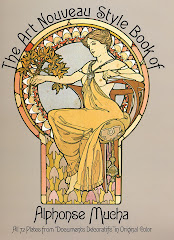








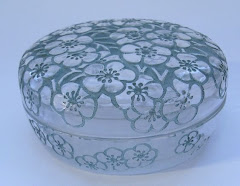
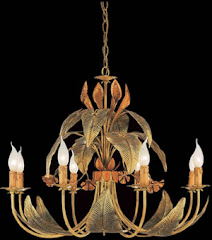
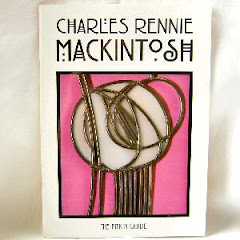
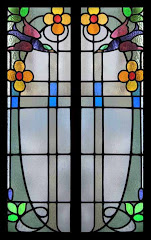


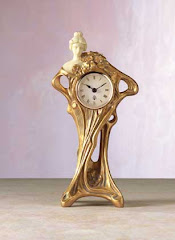
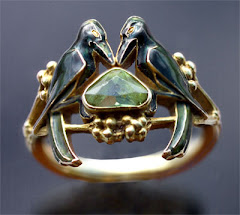
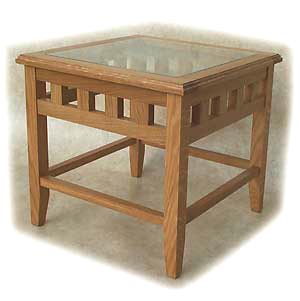
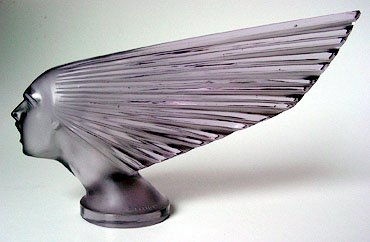


No comments:
Post a Comment